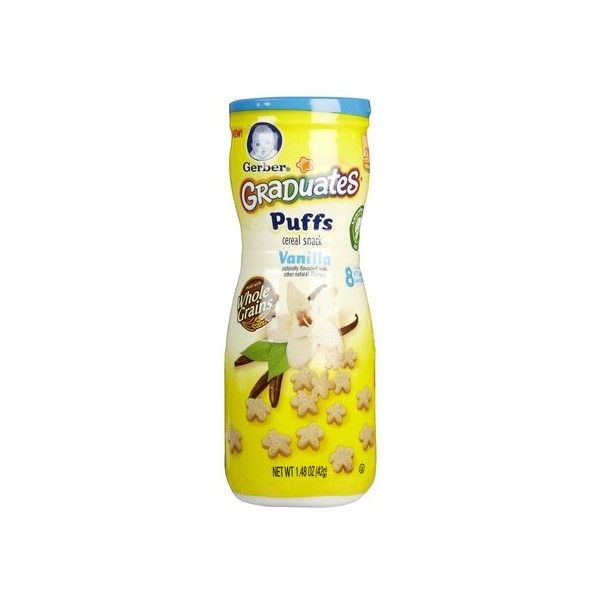Tofu finger food baby
The Ultimate Guide to Tofu for Babies
Jump to Recipe
Introduce tofu to your baby with confidence with these cooking tips and recipes! Whether you are doing purees, baby led weaning, or both, tofu is an amazing first food.
When Can Babies Eat Tofu?
Tofu can be offered to babies as soon as they’re ready to start solids, usually around 6 months. It’s important to remember that your baby is unique and that rather than going by the calendar, you need to make sure your baby is DEVELOPMENTALLY ready to start solids.
If you’re unsure, be sure to grab my FREE handout!
Is Tofu Safe for Babies?
Tofu is not a choking hazard as long as it's soft enough to be easily smushed between your thumb and forefinger and is served in an age-appropriate way.
Tofu is made from soybeans, which is one of the top allergens. If you were told to wait until around 2-3 years of age to introduce it, this is outdated advice!
The current recommendation is to introduce highly allergenic foods EARLY and OFTEN. By doing so, you can dramatically reduce the risk or actually help prevent the development of food allergies.
When first introducing, start with a small amount and gradually increase.
Health Benefits
Packed with so many essential nutrients, tofu is an excellent source of plant-based protein and calcium. It also contains omega-3 fatty acids, which play a key role in brain development, as well as many essential micronutrients, like iron, zinc, and magnesium.
Soybeans are one of the few plant-based protein foods and the only legume that contains ALL nine essential amino acids. Quinoa is another source.
Do be sure to serve tofu alongside a vitamin C rich food to greatly enhance the absorption of iorn.
Related: Best Iron-Rich Foods for Babies and Toddlers
What About the Phytoestrogens?
You may have heard that consuming soy foods can cause feminization in boys and breast cancer.
Yes, tofu contains isoflavones, phytoestrogens that are similar in structure to the hormone estrogens. However, they are NOT the same and behave differently in the body.
However, they are NOT the same and behave differently in the body.
In fact, there isn’t research to support that soy has a negative impact on testosterone. But there is evidence showing that phytoestrogens do NOT affect testosterone and estrogen levels.
In addition, there is evidence that girls who eat soy at a young age may have a lower risk of breast cancer later in life.
Types of Tofu - which one is best?
Tofu (100g) | Silken | Soft | Firm | Sprouted |
Protein (g) | 4.76 | 7.17 | 9.04 | 13.2 |
Iron (mg) | . | 1.11 | 1.61 | 1.7 |
Calcium (mg) | 83 | 111 | 201 | 239 |
Tofu is made from soybeans, water, and bean curd. Similar to the cheese-making process, it's made by curdling fresh soy milk, pressing it into a block, and then cooling it.
All types of tofu are great! You will notice differences in the key nutrients, but again, I encourage you to serve a variety. Do look for calcium sulfate in the ingredients.
It comes down to how you want to serve it.
Silken and soft tofu are wonderful for purees and adding creaminess to sauces, dips (tofu mayo), smoothies, baked goods, puddings, etc. They can also be used as an egg replacer, if your baby is allergic!
They can also be used as an egg replacer, if your baby is allergic!
Firm and extra-firm tofu are great for slicing into strips or bite-sized pieces as a finger food.
Sprouted tofu is the same as extra-firm tofu but made with sprouted soybeans. If you find that your baby doesn't tolerate tofu, this variety may help as the process of sprouting helps aid in digestion.
How to Prep Tofu
Tofu contains a lot of water so it’s best to press out as much as possible if intending to serve as a finger food. Here's what to do:
- Wrap the tofu block in 2-3 or more layers of paper towel, a clean dishcloth, or a kitchen towel.
- Place a baking sheet on top with a few canned goods or a heavy skillet (if using extra firm) to help weigh it down.
- Set aside for at least 20 minutes.
If adding to sauces, dips, smoothies, etc. then there's no need to press. Simply drain, wrap tofu in a kitchen towel, and gently press over the sink.
Top Cooking Methods
First, you want to cut the tofu into strips that are about 2 inches in length (size of your pinky finger) and about ½ to ¾ inch in width.
Here's how I like to cut a block of tofu:
Its subtly sweet, nutty, and neutral flavor profile makes it the perfect blank canvas, taking on whatever flavor it's cooked with.
Most of the recipes you find on the internet promise crispy tofu because we, the adults, love this texture. However, we want the tofu to be soft (easily smushable between thumb and forefinger) for babies, and that's what I promise ;).
Here are several ways to achieve this so that it's safe and enjoyable for your little one.
Baked
Remember - bigger is safer for babies who are just starting solids. You can always chop into smaller pieces after it's cooked to serve to older babies and kids.
In a small bowl, whisk together oil and seasoning(s) of choice. Place tofu on a baking sheet. Brush oil mixture onto each piece of tofu to prevent breaking. If using extra-firm tofu, you can toss with oil and seasonings.
You can totally use several different flavorings as you see pictured (oregano, curry powder, cumin) to incorporate variety throughout the week.
Place on baking sheet and bake at 375°F for 20-25 minutes, flipping halfway through. To ensure evenly cooked tofu, don't skip this step.
Pan Fried
Heat 1-2 tablespoons of oil over medium high heat. Arrange your prepared tofu in a single layer on the pan and cook for 2-3 minutes, or until lightly browned on the bottom. Flip and cook for an additional 2-3 minutes. Work in batches if necessary.
Pictured: cooked in sesame oil and seasoned with garlic powder.
Scrambled
The texture of this tofu scramble is soft and moist, making it perfect for babies. You can simply serve as is, mix in with oatmeal, or mash on top of a toasted bread.
How to Serve Tofu to Babies (Baby Led Weaning)
6+ Months Old
You can:
- puree
- mash and preload onto a spoon or mix into other foods (e.g. oatmeal, quinoa baby cereal, lentils, mashed avocado, hummus, etc.)
- serve as a big strip
Pictured above are the exact meals I served to my baby during her first month of starting solids.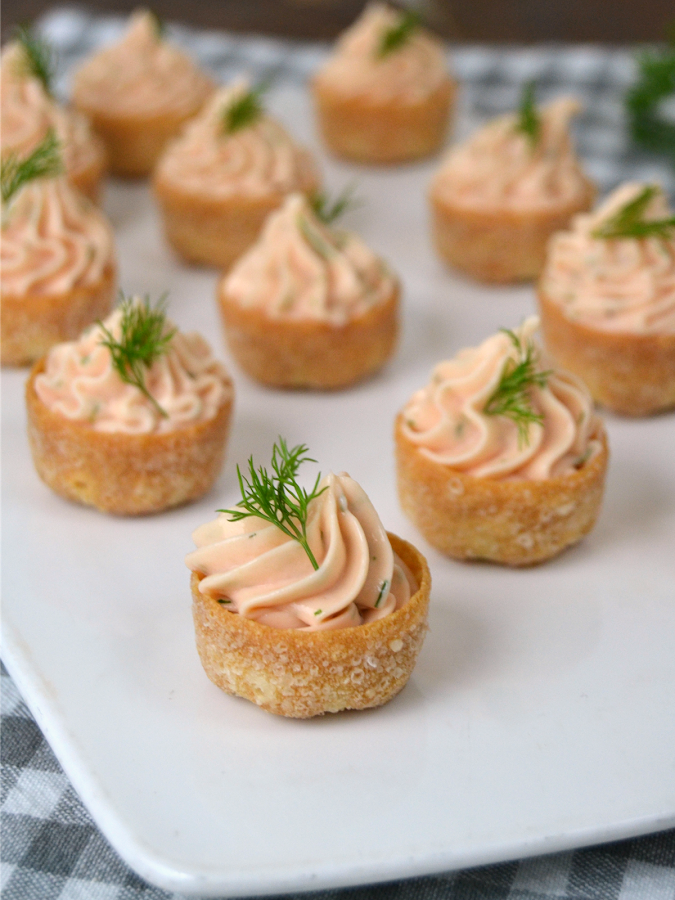 I actually filmed EVERYTHING I made for her as well as my toddler, husband, and me from Day 1 to Day 84 (so 3 months) in real time and turned it into an easy to access and follow program!
I actually filmed EVERYTHING I made for her as well as my toddler, husband, and me from Day 1 to Day 84 (so 3 months) in real time and turned it into an easy to access and follow program!
Do you want to minimize picky eating and set a solid foundation for a lifetime of healthy eating habits?
Check out this 3 month mastering self-feeding program! It’s the closest thing to me being in your kitchen
Find out more!
9+ Months Old
As your baby develops their pincer grasp and is able to pick up small pieces of food using their thumb and finger, you can cut into small, bite-sized pieces. I still suggest continuing to offer larger pieces so they can practice taking bites.
I also encourage you to offer mixed foods early and often during this "window of opportunity" when babies are most willing to try and accept new foods.
If your child has never had foods touching or mixed together, it will be much harder to get them to eat these as they enter toddlerhood.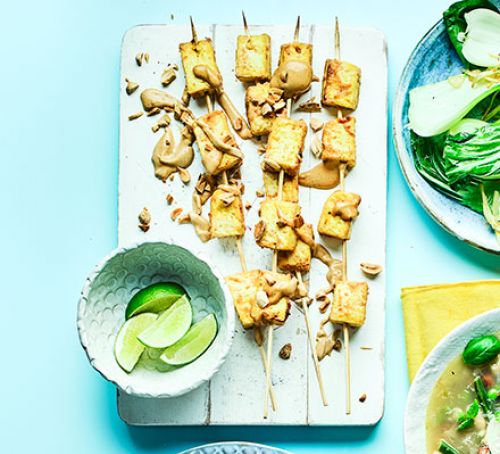
Related: Is my Toddler Turning into a Picky Eater?
Frequently Asked Questions
Organic vs. conventional tofu, which one is better?
I recommend purchasing organic, if possible, as it guarantees there's no genetically modified organisms (GMOs).
What is the best way to store?
If you don't use all of the tofu, submerge in cold water in an airtight container and refrigerate for up to 1 week. Be sure to replace the water each day. Toss it out if it starts to smell funny.
Once cooked, store in an airtight container and refrigerate for up to 3 days.
Can I freeze cooked tofu?
I wouldn't for babies. Freezing will result in a chewier texture which we don't want.
Is raw tofu safe for babies?
Yes! tofu that you find at the store actually has already been cooked. As long as it’s been pasteurized, it is safe. Having said that, if you want to err on the side of caution then you can certainly heat up the sauce and bring to room temperature before serving to your baby.
As long as it’s been pasteurized, it is safe. Having said that, if you want to err on the side of caution then you can certainly heat up the sauce and bring to room temperature before serving to your baby.
Tofu Recipes for Babies
- Non-Spicy Korean Tofu Soup
- Tofu Mayo
- Creamy Sweet Potato Sauce
- Easy Baked Shrimp Cakes
Did you make this recipe? Leave a rating below and let me know how you liked the recipe! Your feedback means so much to me!
How to Cook Tofu for Baby Led Weaning
Introduce tofu to your baby with confidence with these cooking tips and recipes! Whether you are doing purees, baby led weaning, or both, tofu is an amazing first food.
5 from 4 votes
Print PinPrep Time: 5 minutes
Cook Time: 25 minutes
Total Time: 30 minutes
Servings: 12 (2 strips)
Author: Min | MJ and Hungryman
- ▢
Sheet Pan
- ▢
Baking Mat
- ▢ 14 ounces firm or extra firm tofu
- ▢ oil (e.
 g. olive, avocado, sesame)
g. olive, avocado, sesame) - ▢ seasonings (e.g. curry powder, turmeric, cumin, oregano, garlic powder)
First press the tofu. Wrap the tofu block in 2-3 or more layers of paper towel, a clean dishcloth, or a kitchen towel. Place a baking sheet on top with a few canned goods or a heavy skillet (if using extra firm) to help weigh it down. Set aside for at least 20 minutes.
Baked
Preheat oven to 375° Fahrenheit. Line a baking sheet with parchment paper or baking mat and set aside.
Cut into strips that are about 2 inches in length (size of your pinky finger) and about ½ to ¾ inches in width.
Toss tofu with oil and seasoning(s) of choice.
Place on baking sheet and bake for 20-25 minutes, flipping halfway through. To ensure evenly cooked tofu, don't skip this step.
Pan-Fried
Heat 1-2 tablespoons of oil over medium high heat. Arrange prepared tofu in a single layer on the pan and cook for 5-6 minutes, or until lightly browned on the bottom.
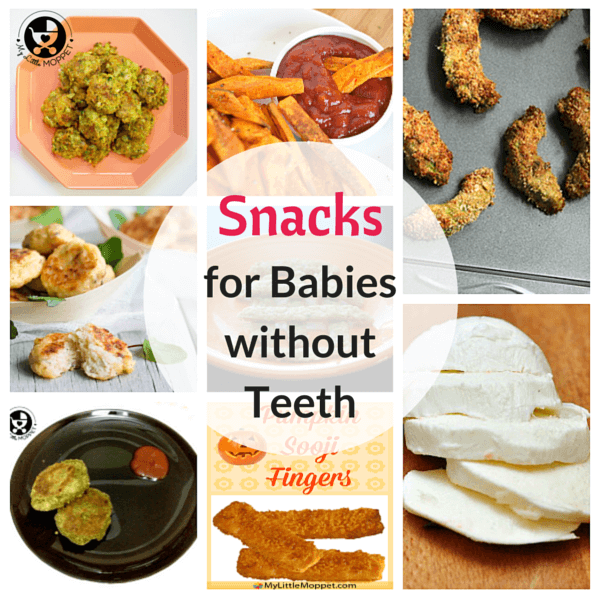 Flip and cook for an additional 5-6 minutes. Work in batches, if necessary.
Flip and cook for an additional 5-6 minutes. Work in batches, if necessary.
If you don't use all of the tofu, submerge in cold water in an airtight container and refrigerate for up to 1 week. Be sure to replace the water each day. Toss it out if it starts to smell funny.
Once cooked, store in an airtight container and refrigerate for up to 3 days.
I don't recommend freezing.
Calories: 28kcal | Carbohydrates: 1g | Protein: 3g | Fat: 1g
Course lunch, dinner
Cuisine American
Tried this Recipe? Tag me Today!Tag me @KidFriendly.Meals today!
Tofu for Babies and Kids (Tips and Recipes)
Learn how to make tofu for babies, including options that work for baby-led weaning, finger foods, and transitioning into toddlerhood. Tofu is an affordable plant-based protein that is so incredibly versatile—and easy to make delish!
Tofu for Babies
Tofu is one of our favorite plant-based proteins since it’s so budget-friendly and easy to flavor in any way you like.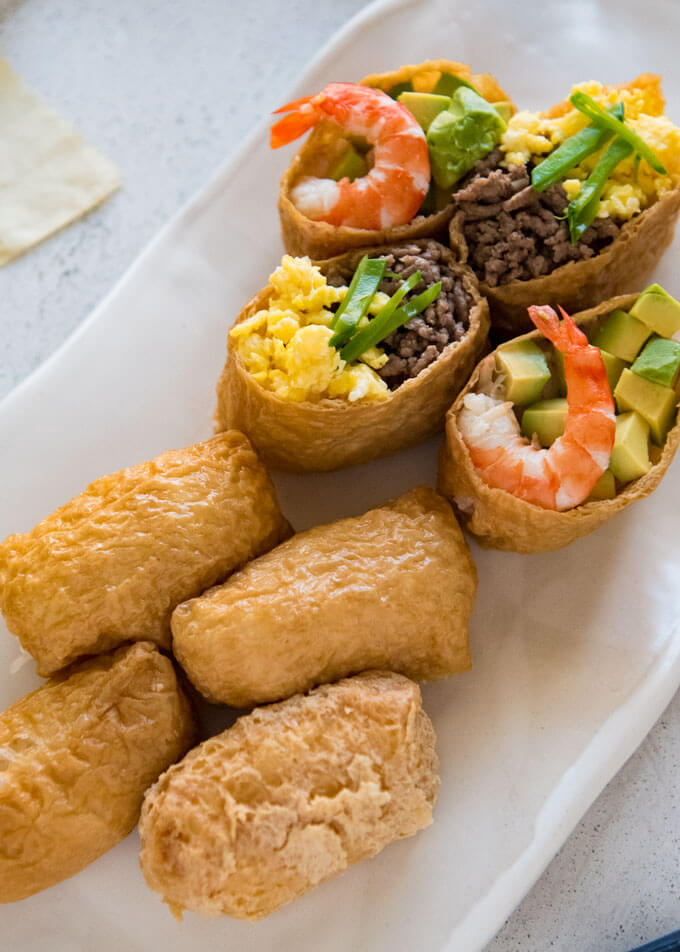 And it’s especially great for babies and kids since the texture is soft and so easy to chew—so it can be easier to eat than a lot of meat options.
And it’s especially great for babies and kids since the texture is soft and so easy to chew—so it can be easier to eat than a lot of meat options.
Tofu is rich in protein and high in polyunsaturated fats, so it’s especially awesome since little kids need lots of regular fat options in their diet. It can also be a great source of B vitamins and iron.
On its own, tofu doesn’t taste like much, but it absorbs liquids, sauces, and flavors really easily so you can really make it taste like anything you or the kids like!
Is tofu safe for babies?
Tofu is a perfect, soft texture for babies, rich in nutrients, and easy to flavor, making it an all-star baby food. It’s also much less expensive than meat or fish, which makes it a great protein option for the whole family.
And if you have any concerns about soy products and cancer, there is a lot of research showing that eating soy can be protective against cancers. (It’s a different story with soy supplements, so it’s important to know what the concerns are really about. )
)
Tofu Finger Food
To serve tofu as a finger food, simply cook it as desired and cut up into small pieces. You can offer almost any type of tofu as a finger food—though “silken,” or the softest type, may be a little harder to pick up than “firm” or “extra-firm” simply since it’s so soft.
TIP: Find my full list of easy-to-eat early finger foods here.
Tofu for Baby-Led Weaning
Tofu has a great texture for baby-led weaning since ideally the food we offer when feeding a baby in the BLW style are soft and easy to mash between our fingers. Tofu is just that!
You can offer a finger-size piece of cooked tofu and let baby take it from there. Or even incorporate silken tofu into a number of other recipes (like smoothies) to offer baby.
Frequently Asked Questions
How do I give my 6-month-old tofu?
To offer a 6-month-old tofu, you can serve a cooked finger-size piece baby-led weaning style, you can blend silken tofu into a smoothie, or blend silken tofu into almost any puree.
How can I give my 9-month-old tofu?
For a 9-month-old baby who can pick up small pieces of food with their fingers using what’s known as the “pincer grasp,” you can simply dice up any cooked tofu into small pieces. They should be about the size of a pea or two.
What can I do with silken tofu?
You can scramble silken tofu in a pan like scrambled eggs, blend it into a smoothie or pureed soup, or puree it with a baby food. Some people like to use it in place of cream in soups and pasta recipes.
Baked Tofu
Baking tofu on a sheet pan in the oven is one of the easiest, most hands-off ways to prepare tofu. And this recipe is easy to toss together and then either serve or save to enjoy throughout the week.
With just a few ingredients from the pantry, you can make baked tofu that rivals even the fanciest salad bar. (I was always wondering how the tofu on the Whole Foods salad bar was made and it’s basically this recipe!)
Steamed Tofu for Baby
Steamed tofu is an easy option that’s very lightly flavored and mellow. Simply place sliced tofu into a steamer basket fit over a pot of simmering water or broth. You can add sliced lemon, herbs, or any other aromatics to add a little more flavor, and cook until the tofu is just warmed through.
Simply place sliced tofu into a steamer basket fit over a pot of simmering water or broth. You can add sliced lemon, herbs, or any other aromatics to add a little more flavor, and cook until the tofu is just warmed through.
TIP: You can also poach extra-firm tofu by simmering it in any sauce you like, such as a Tikka Masala simmer sauce, marinara sauce, or even chicken broth.
Pan-Fried Tofu
I love pan-fried tofu both because it’s a really straight forward way to make tofu, and also because it has a really pleasant flavor.
Plus, you can serve this with any dip the kids like and add it to a variety of dishes including pasta, salads, pasta salad, and more.
The info on how to make this one is below so you can share it with the kids—at any age!
Ingredients for Pan-Fried Tofu
To make this recipe you need “extra-firm” or “super-firm” tofu and olive oil.
You could also use butter, ghee, or another cooking oil if you have a different preference.
How to Drain Tofu
To make pan-fried tofu, you’ll want to start by draining the tofu between two kitchen towels. This will remove a lot of the moisture, which will make the result a little crispier.
You can drain tofu on towels, weighted with a bowl or plate, for 30 minutes or up to 8 hours.
Step-by-Step Instructions
Once your tofu is drained, here’s how to make pan-fried tofu. (Scroll down to the bottom of this post for the full information on this recipe.)
- Cut the tofu block into four even pieces.
- Optional: Cut each piece in half to make shorter pieces.
- Warm oil or butter in a pan and add the tofu. Cook until golden.
- Flip over and finish cooking.
TIP: You can serve this warm or let it cool to room temperature and serve it that way. Both work well!
Best Tips for Success
- Drain tofu and let sit between two kitchen towels, weighted by a heavy bowl or plate, to remove extra moisture before baking or pan-frying.

- Add silken tofu to smoothies, baby food purees, or in puree soups.
- To serve tofu in the baby-led weaning style, offer it in finger-size pieces.
- To serve tofu as a finger food, cut it into small pieces for baby to pick up.
- You may also like Crispy Tofu Nuggets, Sesame Tofu, Stir Fry with Tofu, and Chia Pudding.
I’d love to hear your feedback on this recipe if you try it, so please comment below and rate the recipe by clicking the stars!
Prep Time 30 minutes
Cook Time 12 minutes
Total Time 42 minutes
Author Amy Palanjian
Cuisine American
Course Dinner
Calories 78kcal
Servings 4 -6
- ▢ 12-15 ounces extra-firm tofu block
- ▢ 1 tablespoon olive oil (or coconut or avocado oil)
- ▢ 1/4 teaspoon Italian seasoning, garlic powder, cumin, or a pinch of Chinese 5 Spice (optional)
Open the tofu and drain off the liquid. Place between two clean folded kitchen towels and put a heavy bowl or plate on top.
 Let sit for at least 30 minutes and up to 8 hours. This helps remove liquid from the tofu to make it have nice texture when cooked in the pan.
Let sit for at least 30 minutes and up to 8 hours. This helps remove liquid from the tofu to make it have nice texture when cooked in the pan.Place the tofu on a cutting board. Cut into 1-inch strips by cutting the block into 4 slices. You can cut each slice in half if desired.
Place a cast iron or nonstick pan over medium heat. Add the oil and warm for 30 seconds.
Place tofu into the pan, spreading out so it has room to cook. Cook for 6-8 minutes or until golden brown. Sprinkle with optional spice, if using. Carefully turn over and cook for an additional 6-8 minutes.
Remove from pan and let cool just a little before serving.
Green Pan Non-Stick Pan
Spatula
- Serve cooked tofu with a dip like pizza sauce, marinara sauce, guacamole, or salsa.
- Add pan-fried tofu to a simmer sauce like Tikka Masala sauce, marinara sauce, or even chicken broth and serve with pasta or a favorite grain.
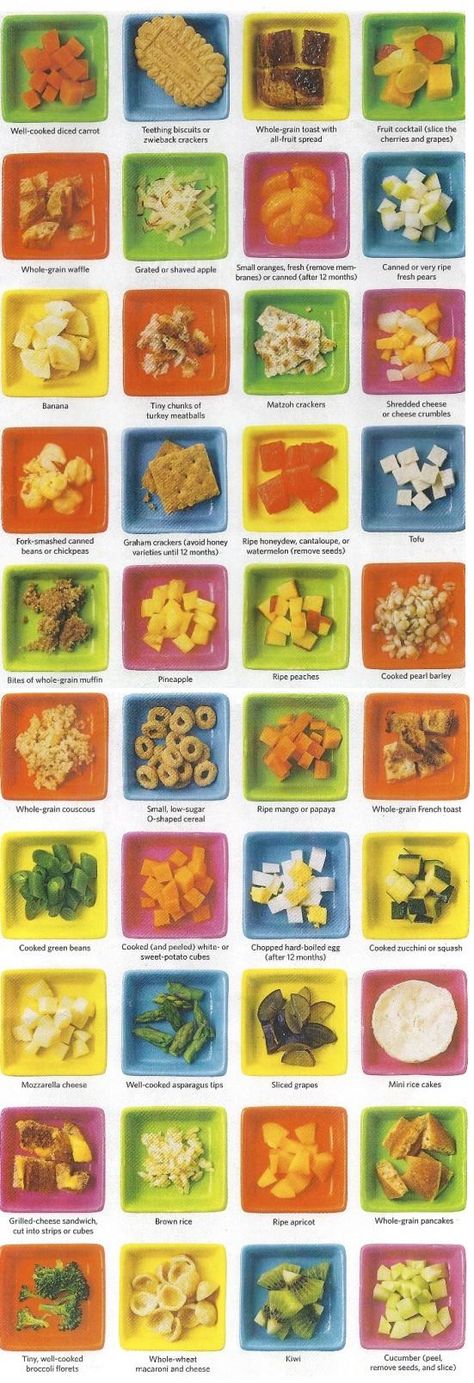
- Drain tofu and let sit between two kitchen towels, weighted by a heavy bowl or plate, to remove extra moisture before baking or pan-frying.
- Add silken tofu to smoothies, baby food purees, or in puree soups.
- To serve tofu in the baby-led weaning style, offer it in finger-size pieces.
- To serve tofu as a finger food, cut it into small pieces for baby to pick up.
Calories: 78kcal, Carbohydrates: 2g, Protein: 6g, Fat: 5g, Saturated Fat: 1g, Polyunsaturated Fat: 1g, Monounsaturated Fat: 3g, Sodium: 54mg, Potassium: 131mg, Fiber: 1g, Sugar: 1g, Calcium: 26mg, Iron: 1mg
Tried this recipe?Rate in the comments and tag @yummytoddlerfood on IG!
Toddlers | Vegetarian.ru
-
Discounts for vegetarians
-
September 2007
Repost
If the children of vegetarians receive enough breast milk from their mother, or formula for infants, and their diet contains quality sources of energy, nutrients and nutrients such as iron, vitamin B12 and vitamin D, growth will be normal during this period of development.

Extreme manifestations of a vegetarian diet, such as fruitarianism and a raw food diet, according to studies, negatively affect the development and growth of the child, and, accordingly, cannot be recommended for children of early (infant) and middle age.
Many vegetarian women choose to breastfeed their babies and this practice should be fully supported and implemented everywhere. Vegetarian women's breast milk is identical in composition to non-vegetarian women's milk and is absolutely adequate in terms of nutritional value. Commercial formulas for infants can be used in cases where the child for various reasons is not breastfeeding, or he was weaned before the age of 1 year. For vegan children who are not breastfed, the only option is a soy-based diet.
Soy milk, rice milk, homemade formulas, cow's milk, goat's milk should not be used as breast milk substitutes or special commercial formulas during the first year of a child's life because these products do not contain any macro- or micro-nutrients and valuable substances in full necessary for the adequate development of the child at such an early age.

The rules for gradually introducing solid foods into your child's diet are the same for both vegetarians and non-vegetarians. When it's time to introduce a high-protein diet, vegetarian children can have tofu gruel or puree, legumes (puree and strain if needed), soy or milk yogurt, boiled egg yolks, and cottage cheese. In the future, you can start giving pieces of tofu, cheese, soy cheese. Packaged cow's milk, or soy milk, full fat, fortified with vitamins can be used as a first drink from the first year of life for a child with the correct growth and development parameters and consuming a variety of foods.
Foods rich in energy and nutrients, such as bean sprouts, tofu, and avocado porridge, should be taken during the period when the baby begins to wean. Fats in the diet of a child under 2 years of age should not be limited.
Babies who are breastfed by mothers who do not consume vitamin B12 fortified dairy products and do not take vitamin B12 supplements on a regular basis will require additional vitamin B12 supplements.
 The rules for the introduction of iron supplements and vitamin D into the diet of young children are identical for both non-vegetarians and vegetarians.
The rules for the introduction of iron supplements and vitamin D into the diet of young children are identical for both non-vegetarians and vegetarians. Zinco supplements are generally not recommended by pediatricians for vegetarian young children as a must, as Zinc deficiency is extremely rare. Increasing the intake of zinc-containing foods or special zinc-containing supplements with food is determined individually, is used during the introduction of additional foods into the child's diet and is necessary in cases where the main diet is depleted in zinc or consists of foods with low bioavailability of zinc.
Tags vegetarianism, baby food, vitamin B12, vitamin D, fruitarianism, raw food, foodShare
Is it possible to give soy products to a baby? Soybean in clinical nutrition for children
Soybean contains unique complete proteins, which are practically not inferior in nutritional value and nutritional value to proteins of animal origin.
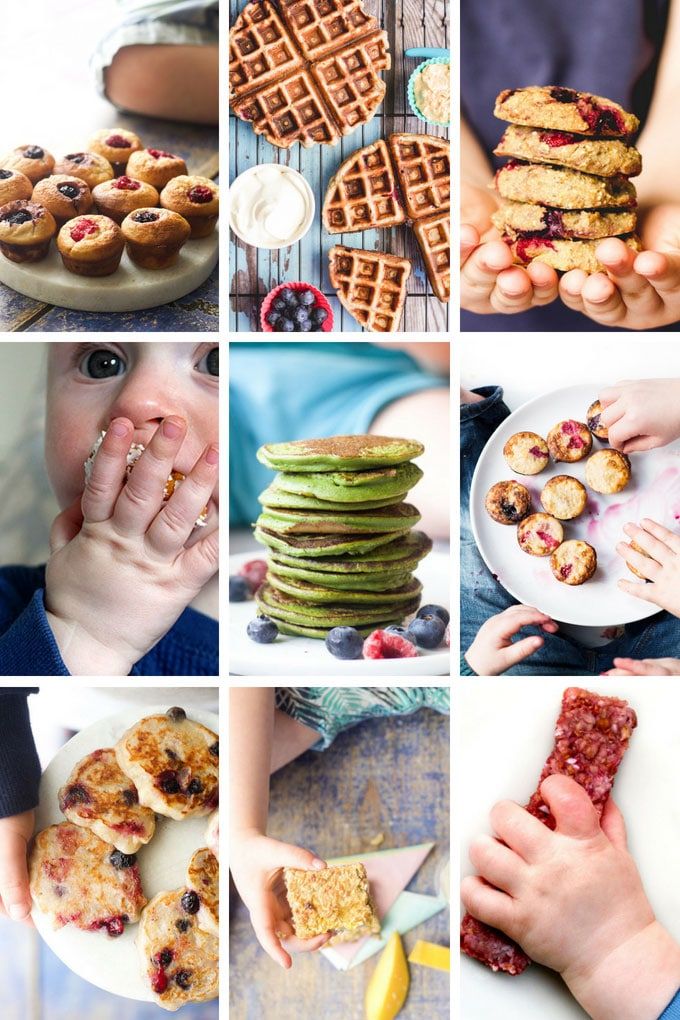 But since the debate about the usefulness of soy is still ongoing, many parents are wondering: is it possible to use this product in baby food?
But since the debate about the usefulness of soy is still ongoing, many parents are wondering: is it possible to use this product in baby food? Why is soy useful?
In human nutrition, soybean seeds are used - soybeans, characterized by a high content of vegetable protein, averaging about 40% of the mass of the seed. Soy proteins in their biological value are very close to proteins of animal origin, that is, they contain all the essential amino acids in the optimal ratio (amino acids that cannot be produced by the body on their own, but can only come with food proteins). Soy protein has a relatively low energy value of 215 kcal per 100 g (for example, 100 g of lean pork contains 357 kcal, and 100 g of beef contains 220 kcal).
A characteristic feature of soy is the low content of carbohydrates, which are represented by soluble sugars - glucose, fructose, sucrose, as well as soluble polysaccharides (starch) and insoluble structural polysaccharides (hemicellulose, pectins, mucus, etc.
 ). These carbohydrates are actively involved in the work of the gastrointestinal tract, facilitating bowel movements, as well as in the absorption and removal of heavy metals and radionuclides from the body.
). These carbohydrates are actively involved in the work of the gastrointestinal tract, facilitating bowel movements, as well as in the absorption and removal of heavy metals and radionuclides from the body. The mineral composition of soybeans is represented by potassium, phosphorus, magnesium, sodium. Soy grain contains a number of vitamins: b-carotene, vitamin E, choline, biotin, folic acid.
Soybeans are the richest natural source of isoflavonoids - biologically active substances, which, together with soy protein, help reduce the risk of developing chronic diseases of the digestive system, cardiovascular system, and cancer. Isoflavones are resistant to heat treatment and cooking does not reduce their quantity and potency.
"Harmful" components of soy products
Along with beneficial substances, soy also contains substances that are considered to be anti-nutritional. These include: inhibitors of enzymes that break down proteins, lectins, urease, lipoxygenase, etc.
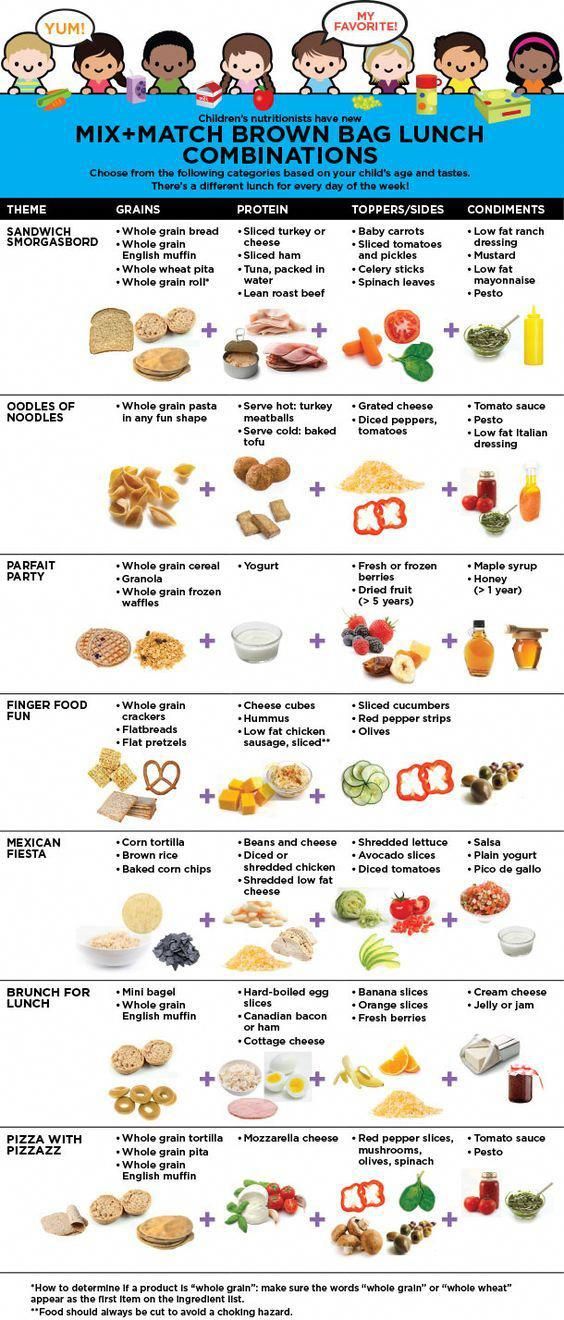
Inhibitors of proteolytic enzymes (enzymes that break down proteins) block the work of these enzymes, forming stable complexes, resulting in a decrease in the absorption of protein substances in the diet. If soy products predominate in the diet for a long time or the diet is composed exclusively of them, then the blockade of pancreatic enzymes leads to the fact that it is forced to work more intensively, "for wear", producing an additional amount of enzymes, which ultimately leads to a violation of its function.
Lectins disrupt the absorption function of the intestinal mucosa, thus increasing its permeability to bacterial toxins and decay products.
Lipoxygenase - an enzyme that oxidizes lipids (fats), resulting in reduced taste of soy. Inactivation of harmful substances (almost 95%) occurs during the thermal and industrial processing of soybeans, which means that their concentration in soy products is almost zero.

The exceptional composition of soy, namely: the absence of cholesterol and lactose in it, the presence of unique proteins, whose amino acid composition is almost identical to the composition of proteins of animal origin, allows the use of soy and its processed products in the diet of not only adults, but also children.
Soy-based infant formulas
Specialized infant formulas based on purified soy protein (isolate) are made from non-genetically modified raw materials, contain only vegetable fats and carbohydrates, a balanced vitamin and mineral composition, and therefore they are easily digested and tolerated by the child's body and are a good basis for children's medical nutrition.
Indications for switching to soy formulas are:
- Cow's milk protein intolerance is a special type of food allergy in which the use of products based on cow's milk, including infant formula, leads to the development of allergic reactions on the part of the skin (diathesis) and the gastrointestinal tract (bloating, diarrhea or constipation, regurgitation , colic).

- Galactosemia is a hereditary disease caused by a violation of carbohydrate metabolism and is characterized by a lag in physical and mental development, liver enlargement, jaundice, cataracts (clouding of the lens of the eye).
- Celiac disease is a digestive disorder caused by damage to the villi of the small intestine by gluten (aka gliadin), a protein found in grain products (wheat, rye, malt, barley and oats). This disease has a mixed autoimmune, allergic, hereditary genesis, occurs with a frequency of 1:3000.
- Lactase deficiency is a congenital or acquired condition in which the body, due to a lack or complete absence of the lactase enzyme, is not able to break down the milk sugar - lactose. The disease is characterized by frequent, liquid, frothy, sour-smelling stools, abdominal pain, flatulence, intestinal colic; in young children, dehydration is possible, and insufficient weight gain is observed.

are intended for the correction and prevention of pathological conditions, then the transition to them is possible only on the recommendation of a doctor and when they are administered, the following rules must be observed:
- Cow's milk protein intolerance is a special type of food allergy in which the use of products based on cow's milk, including infant formula, leads to the development of allergic reactions on the part of the skin (diathesis) and the gastrointestinal tract (bloating, diarrhea or constipation, regurgitation , colic).
- during the introduction of a new mixture, it is unacceptable to use new complementary foods;
- Carefully monitor allergy symptoms as soy formulas contain small amounts of native protein (i.e., unpurified protein found in nature) and are therefore potentially allergenic. Due to the high risk of developing an allergic reaction, it is not recommended to transfer babies under 4-5 months of age to soy food .
But the most important thing is the right choice of alternative nutrition for the baby, taking into account his individual characteristics and state of health, so when choosing a mixture, you should consult a doctor.
It is recommended that only appropriately labeled specialized foods be used in infant nutrition, i. e. the label must indicate that the product is recommended for baby food. This ensures that medicinal soy mixtures and other soy-based products comply with the sanitary and epidemiological rules and regulations adopted in the Russian Federation, and exclude the use of genetically modified soy in their production.
e. the label must indicate that the product is recommended for baby food. This ensures that medicinal soy mixtures and other soy-based products comply with the sanitary and epidemiological rules and regulations adopted in the Russian Federation, and exclude the use of genetically modified soy in their production.
Soy products
In addition to specialized soy formulas, soy-based baby food products are on the market, such as soy milk, kefir, cottage cheese, cheese curds. They can be used by children over 2 years old in the same way as products based on cow's milk, provided that the product is well tolerated. But we must remember that for children of primary preschool age, milk and dairy products remain the basis of the diet, as they contain calcium and vitamin D, which are necessary for the growth and development of the child. And soy dairy products (because of their plant origin) lack these qualities. Therefore, a complete replacement of cow's milk is undesirable.
The production of soy products can be conditionally represented by two main lines: dairy and meat.
Dairy products , which are allowed children over 2.5-3 years old , are obtained using a special unit, the so-called soy cow, - pre-treated soybeans are placed in it, from which, under the influence of high pressure liquid soy milk is obtained, which is further pasteurized to increase the shelf life. Soy milk, sweet in taste, can be used in nutrition in the same way as cow's milk, as it is not inferior to it in terms of its nutritional value, but does not contain lactose. In the process of milk production, okara is also obtained - gruel from the pulp of soybeans, which is a source of a large amount of coarse fiber. Therefore, it is not recommended to use it in the diet of children. Okara is added to minced meat and dough, which makes products cheaper without losing taste.
Genetically modified soybeans
Genetically modified products are produced from so-called transgenic plants, and transgenic soybeans as a cheap vegetable protein are widely used both for the production of soy products themselves and as a "protein fortifier" for sausages and meat products. Transgenic plants are hybrids in which a set of genes has been changed in order to give the plant some useful properties: resistance to pests, frost resistance, yield, calorie content, etc. When a new quality is "added" to a plant, it is not completely known how this will affect the plant as a whole. on its genetic code, and therefore, it is not known how this will affect the health of a person who regularly eats food from genetically modified plants. Independent scientists have concluded that the active consumption of genetically modified foods is associated with significant health risks. This can lead to the spread of new pathogenic bacteria that have a harmful effect on the body, when "beneficial" genes are inserted into a certain DNA chain, various technological "garbage", for example, a gene for resistance to antibiotics, can also get there. Eating genetically modified food can cause severe allergies, as foreign (mutated) proteins are potential allergens. All this makes the use of transgenic products in baby food unacceptable.
Transgenic plants are hybrids in which a set of genes has been changed in order to give the plant some useful properties: resistance to pests, frost resistance, yield, calorie content, etc. When a new quality is "added" to a plant, it is not completely known how this will affect the plant as a whole. on its genetic code, and therefore, it is not known how this will affect the health of a person who regularly eats food from genetically modified plants. Independent scientists have concluded that the active consumption of genetically modified foods is associated with significant health risks. This can lead to the spread of new pathogenic bacteria that have a harmful effect on the body, when "beneficial" genes are inserted into a certain DNA chain, various technological "garbage", for example, a gene for resistance to antibiotics, can also get there. Eating genetically modified food can cause severe allergies, as foreign (mutated) proteins are potential allergens. All this makes the use of transgenic products in baby food unacceptable.
When soy milk is boiled, foam forms on its surface - the so-called yuba , its taste is quite specific. Yuba is collected with a slotted spoon, dried, rolled up, and after complete drying, added to salads and other dishes instead of asparagus or bamboo. Yuba is also not recommended for use in baby food.
Soy kefir is made by adding a starter culture. It is no healthier than traditional kefir, on the contrary, it is depleted in calcium and vitamins, but it can be used in the nutrition of vegetarian children.
Curdled soy milk produces soy tofu cheese or bean curd. Tofu is like homemade cheese. It has a neutral taste (i.e. almost no own taste), which is one of the advantages of tofu, since it is possible to add all kinds of additives, such as seaweed (in industrial production), fresh fruits, nuts or dried fruits at home, which improves taste and nutritional qualities of the product.
Soy curd is made from soy milk like tofu, but with added sugar.
The meat line of products (which are allowed for children over 5 years old ) is prepared from soy concentrate, which replaces meat, from which you can cook a huge number of different dishes - these can be cutlets, chops, etc. neutral taste and smell, therefore, to give it specific odors, it is necessary to add dressings and sauces, which is excluded in the nutrition of young children.
Soy flour , soy protein isolate is added to meat products (sausages, frankfurters, sausages), it is advisable not to use in the diet of children under 3 years old .
It is not recommended to use in the children's menu miso - soybean paste, fermented, natto which is made from whole cooked soybeans, tempeh fiber, and its use will lead to digestive problems in the child. Also excluded from the children's diet are soy sauce due to high salt content. In addition, it often causes allergic reactions, since its "sourdough" requires the addition of special microorganisms. Soy flour can only be included in the child's diet after 5 years , since this product contains a substance that inhibits the activity of one of the enzymes that digests protein in the duodenum. During heat treatment, this substance is destroyed, but still cereals based on such flour should not be given to babies. Flour contains carbohydrate indigestible components - raffinose and stachyose, which can cause bloating, diarrhea, etc.
In addition, it often causes allergic reactions, since its "sourdough" requires the addition of special microorganisms. Soy flour can only be included in the child's diet after 5 years , since this product contains a substance that inhibits the activity of one of the enzymes that digests protein in the duodenum. During heat treatment, this substance is destroyed, but still cereals based on such flour should not be given to babies. Flour contains carbohydrate indigestible components - raffinose and stachyose, which can cause bloating, diarrhea, etc.
Healthy, hypoallergenic soybean oil can be used in baby food, in the same volumes as conventional vegetable and olive oils.
Modern soybean pre-sprouting processing technology produces new baby food products with good taste and nutritional properties, which include extrusion products in the form of breakfast cereals and confectionery products, such as cookies, muffins.

 95
95



